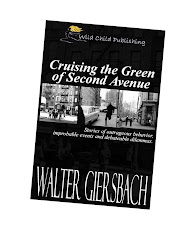 |
|
A local monument lists
the colonists who participated
in the “tea party”
|
Everyone knows about the Boston Tea Party when the colonists dumped
British tea into the harbor to protest King George’s taxes. But did you know the little town of Greenwich
(pronounced GREEN-wich), N.J., had its own gathering on the night of Dec. 22,
1774. It was almost exactly one year
after the famed Boston incident.
In fact, “There were five incidents up and down
the East Coast where they destroyed tea,” says Bob Francois of the Cumberland
County Historical Society. Charleston,
Annapolis and Princeton also sabotaged imported tea.
On that night, a group of about 40 South Jersey patriots
braved the cold to protest British taxation.
The villagers stole a shipment of tea, hauled it to the town square and
set it ablaze to express their defiance.
“The tea that arrived in Greenwich came on the second
attempt to deliver the shipment,” said Jonathan Wood, former president of the
Cumberland County Historical Society.
“The first attempt was hindered by a group of Philadelphia
patriots. They said, ‘If you will turn
the ship around, there will be no problems at all. If you decide that you will not turn the ship
around, you have never seen as much trouble as you are about to see.’ The ship simply turned around and went back
to the European port.”
A year later, the British tried to deliver tea
again. This time, the Greyhound sailed four miles up the
Cohansey River and hid its cargo in Greenwich, a peaceful settlement of
Quakers, Baptists, Presbyterians and Episcopalians. They intended to secretly hold the shipment
in Greenwich until it was safe to move it overland to Philadelphia.
John Fea, associate professor of American history at Pennsylvania’s
Messiah College, researched the incident through Philip Vickers Fithian’s
diaries. Fithian returned to Greenwich
just before the tea burning and wrote, “Last night the tea was, by a number of
persons in disguise, taken out of the house and consumed with fire, Violent and different are the words about
this uncommon manoeuvre among the inhabitants.
Some rave, some curse and condemn, some try to reason; many are glad the
tea is destroyed, but almost all disapprove the manner of the destruction.”
The East India Tea Company, owners of the tea, weren’t
happy and appealed to Gov. William Franklin for justice. Franklin told Sheriff Jonathan Elmer to
arrest the participants, some of them being Elmer’s own relatives.
Sheriff Elmer brought the men to trial, but chose a jury
of sympathetic Whigs and his own nephew as foreman. The verdict: “No cause for action.” Gov. Franklin promptly removed the sheriff
and appointed Daniel Bowen, the loyalist who had stored the tea. The second jury also found no cause for
action. The tea owners and governor gave
up.
The tea party participants went on to lead very public
lives. Most that took part in the
burning enlisted in the Continental Army.
Four would give their lives for freedom.
Sheriff Elmer was elected one of the first two senators from New
Jersey. Richard Howell, in whose home
they assembled on that night, became governor of the state in 1792. Joseph Bloomfield, defense attorney at both
trials, succeeded Howell as governor, and the town of Bloomfield is named after
him.
“We don’t know a lot about what actually happened that
night,” admits Fea. “In Cumberland
County, there were no Revolutionary War battles. The tea burning was a major happening in our
county, and even though it happened back in 1774 it’s still in the forefront
and the locals really celebrate it.”
The lesson of the tea burning is important even if
details are missing. It’s a story of
revolt. The central characters are
ordinary individuals rather than war heroes or politicians. Fea says, “The tea burning is what the
Revolution looked like in a local town.”
Greenwich faded as a major commercial hub in the early 1800s, and its
population now stands at just over 800 residents. The buildings that once were businesses are
now homes along Ye Greate Street. The
two-mile long main avenue’s course hasn’t changed since 1684.
In its heyday, Greenwich had
11 taverns where people would gather and gossip. It was a thriving port, and by 1701 was one of
only three official ports of entry for New Jersey. (The other two were Burlington and Perth
Amboy.) Foreign ships unloaded their
cargoes that were then hauled to Philadelphia or Burlington overland or on
smaller boats.
Today’s commercial life is largely
limited to the Greenwich Country Store & Deli and Aunt Betty’s Kitchen. Along Ye Greate Street is the Gibbon House, a
1730 replica of a London townhouse that houses the historical society.
While time may have forgotten
this south Jersey town, visiting Greenwich is like stepping pleasantly back
into the 18th century.



No comments:
Post a Comment